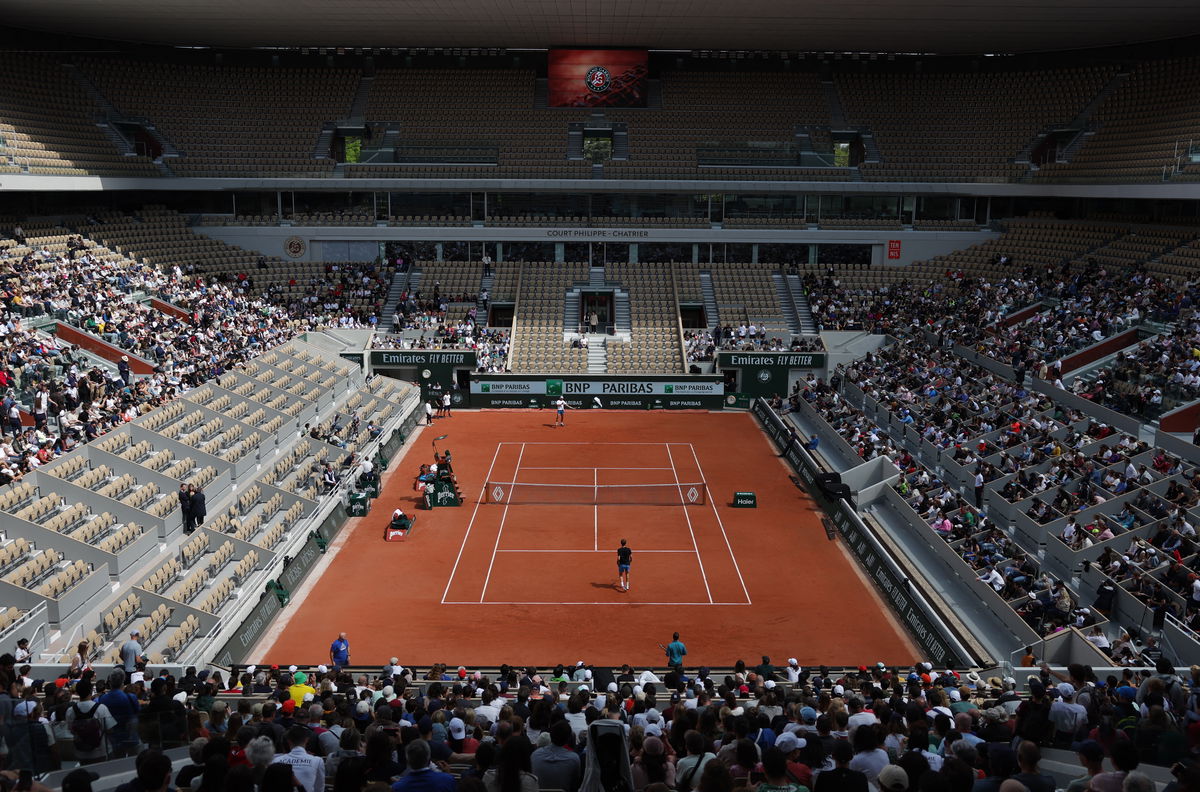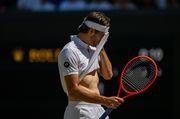
Reuters
Tennis – French Open Preview – Roland Garros, Paris, France – May 21, 2024 General view of Spain’s Rafael Nadal during a practice session ahead of the French Open REUTERS/Gonzalo Fuentes

Reuters
Tennis – French Open Preview – Roland Garros, Paris, France – May 21, 2024 General view of Spain’s Rafael Nadal during a practice session ahead of the French Open REUTERS/Gonzalo Fuentes
The French Open is legendary for its Parisian red clay, unforgettable battles, and Rafael Nadal’s 14 titles. The tournament’s story began in 1891 as a French-only event. By 1925, it opened its doors to international players. In 1928, it moved to Stade Roland Garros. Then came history in 1968, when it became the first Grand Slam of the Open Era. Over the years, the event has added show courts, retractable roofs, digital upgrades, and equal prize money. Yet one significant change is still missing in Paris.
Watch What’s Trending Now!
Everyone recognizes that tennis tournaments have recently embraced technology, most notably electronic line-calling. The system is in place on every court at the US Open, Wimbledon, and the Australian Open. But Roland Garros? The Paris clay refuses to bow to the machines. The French Tennis Federation made it official on September 28. Once again, Roland Garros will stick with line judges for the 2026 French Open. Paris proudly stands apart while the rest of the sport has gone fully electronic.
During the 2025 edition, 404 refereeing officials worked across the grounds, 284 of whom were French. In a press release, the FFT defended its vision, praising “the excellence of French refereeing, recognized throughout the world, and which brings complete satisfaction to the organization of the tournament.”
ADVERTISEMENT
🚨
🇫🇷 Roland-Garros has confirmed that they will CONTINUE to use line judges at next year’s edition
🇦🇺🇬🇧🇺🇸 The other 3 majors have all moved to electric line calling
🗣️ https://t.co/pYZfKbEFjm
📸 AP Photo/Lindsey Wasson pic.twitter.com/Qzj4Zfqj7g— Olly Tennis 🎾🇬🇧 (@Olly_Tennis_) September 29, 2025
Organizers insist that clay is a special case. They aren’t quick to believe technology sees everything better. The FFT stood firm: “On the occasion of the next Roland-Garros tournament, the FFT will continue to highlight the excellence of French refereeing.” In their view, the human eye still beats Hawk-Eye when tracking ball marks smudged across a clay baseline.
So, from May 18 through June 7, 2026, the French Open could remain the only Slam with line judges on court. Everywhere else, electronic line calling technology rules the courts. The Australian Open and US Open made the switch in 2021. Wimbledon finally followed in 2025. On the ATP men’s tour, line judges disappeared altogether at the start of this year. All of that makes Roland Garros a true outlier.
ADVERTISEMENT
While line judges were present at this year’s Roland Garros, it wasn’t without its troubles, and Novak Djokovic felt it most. The 24-time Grand Slam champion lost his cool in his semifinal against world No. 1 Jannik Sinner. Down two sets with Sinner serving at 4-5, Djokovic pushed to flip the script. His backhand was called out at deuce, snatching away a chance at set point. Furious, he protested, but the call stood.
The final between Sinner and Alcaraz didn’t escape controversy either. In the sixth game of the last set, Sinner exploded after a ball from Alcaraz stayed “in” when replays made it clear it was out – by 31mm no less. The TNT Sports booth confirmed the miss, and Sinner had every right to be livid. Electronic line-calling would have fixed it instantly at the US Open, Wimbledon, or the Australian Open.
ADVERTISEMENT
Of course, electronic line-calling has its perks: lightning decisions, accuracy that settles arguments before they start, and a smoother rhythm to matches. Players and fans gain peace of mind knowing every call stays consistent from start to finish. Yet even the best systems stumble now and then.
Electronic line-calling systems face trouble at Wimbledon following French Open stance
Wimbledon made headlines this summer by scrapping line judges for the first time and going all-in with electronic line calling. But the grand debut wasn’t perfect. During Taylor Fritz’s quarterfinal, the system glitched right in the middle of a rally, calling a “fault” even though the point was already live. When Fritz served, a ball boy was still on the court, and Hawk-Eye Live didn’t register the start of play. The umpire had no choice but to stop everything and replay the point.
ADVERTISEMENT
Just a few weeks later, on July 23, Reuters reported a big shake-up for this technology around the globe. The International Tennis Federation announced a brand-new three-tier system that puts electronic line calling into Gold, Silver, and Bronze categories. The idea is to make the tech more accessible and not just limited to the biggest tournaments. Suddenly, ELC has its own pyramid, and smaller events can also get in on the action.
Here’s how the levels stack up. Gold remains at the top and will stay in place for the sport’s crown jewels: the Grand Slams, ATP and WTA Tours, plus the Billie Jean King Cup and Davis Cup. Silver fits the second tier, covering events like the ITF World Tennis Tour. Bronze drops the cost and complexity for national-level events, requiring no off-court operators. That means even regional tournaments can benefit from the same futuristic line-calling magic.
Top Stories
Taylor Fritz Raises Serious Injury Alarm After Rusty Start as Possible Shutdown Looms

Coco Gauff Unpleased About Million-Dollar Opportunity With Carlos Alcaraz, Iga Swiatek & More

Emma Raducanu Ditches Naomi Osaka Challenge Amid Injury Concerns at United Cup

Who Are Eva Lys’ Parents Vladimir and Maria Lys? Everything to Know About This Ukraine-Born German Player’s Talented Family

Naomi Osaka Reveals How Daughter Influenced Her First Loss of 2026

The ITF insists that every level, whether gold, silver, or bronze, must meet the exact demands of “accuracy, reliability, suitability and practicality.” They want one global set of standards across the Grand Slams, ATP, WTA, and ITF events. The trend is clear: Australia, the U.S., and Wimbledon are committed to the switch. The holdout? Paris.
ADVERTISEMENT
The French Open is sticking to its tradition of human line judges. So here’s the question: Should all tournaments embrace the tech-driven future, or does tennis need to keep a piece of its old-school heart? Let us hear your thoughts in the comments below!
ADVERTISEMENT
ADVERTISEMENT
ADVERTISEMENT

